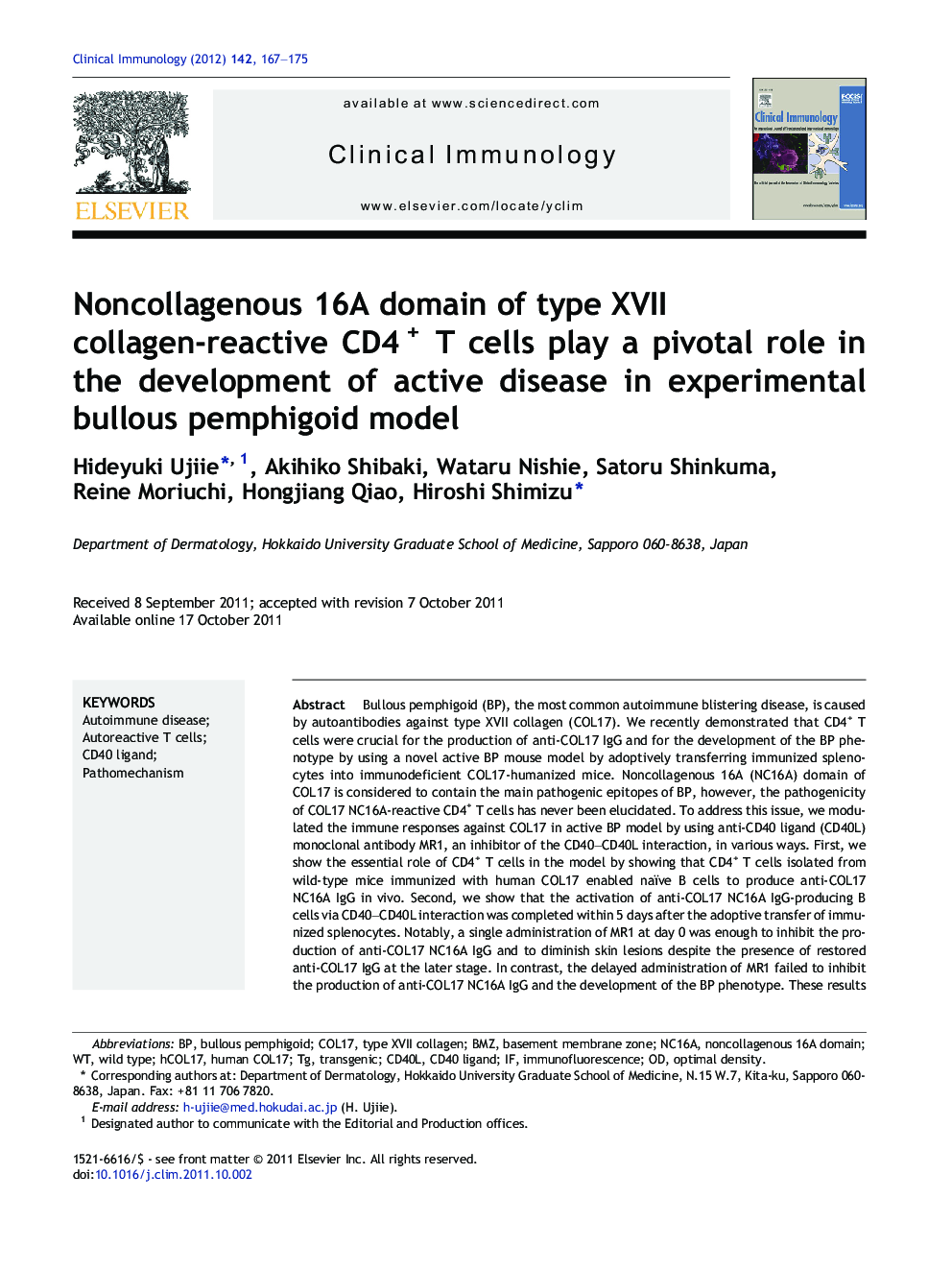| کد مقاله | کد نشریه | سال انتشار | مقاله انگلیسی | نسخه تمام متن |
|---|---|---|---|---|
| 6087767 | 1207398 | 2012 | 9 صفحه PDF | دانلود رایگان |

Bullous pemphigoid (BP), the most common autoimmune blistering disease, is caused by autoantibodies against type XVII collagen (COL17). We recently demonstrated that CD4+ T cells were crucial for the production of anti-COL17 IgG and for the development of the BP phenotype by using a novel active BP mouse model by adoptively transferring immunized splenocytes into immunodeficient COL17-humanized mice. Noncollagenous 16A (NC16A) domain of COL17 is considered to contain the main pathogenic epitopes of BP, however, the pathogenicity of COL17 NC16A-reactive CD4+ T cells has never been elucidated. To address this issue, we modulated the immune responses against COL17 in active BP model by using anti-CD40 ligand (CD40L) monoclonal antibody MR1, an inhibitor of the CD40–CD40L interaction, in various ways. First, we show the essential role of CD4+ T cells in the model by showing that CD4+ T cells isolated from wild-type mice immunized with human COL17 enabled naïve B cells to produce anti-COL17 NC16A IgG in vivo. Second, we show that the activation of anti-COL17 NC16A IgG-producing B cells via CD40–CD40L interaction was completed within 5 days after the adoptive transfer of immunized splenocytes. Notably, a single administration of MR1 at day 0 was enough to inhibit the production of anti-COL17 NC16A IgG and to diminish skin lesions despite the presence of restored anti-COL17 IgG at the later stage. In contrast, the delayed administration of MR1 failed to inhibit the production of anti-COL17 NC16A IgG and the development of the BP phenotype. These results strongly suggest that COL17 NC16A-reactive CD4+ T cells play a pivotal role in the production of pathogenic autoantibodies and in the development of active disease in experimental BP model.
► Immunized CD4 + T cells enabled naïve B cells to produce anti-COL17 NC16A IgG. a The activation of B cells via CD40-CD40L interaction
► The delayed administration of MR1 failed to inhibit the disease activity in BP model.
► Restored anti-COL17 IgG after the early single MR1-treatment has weak pathogenicity.
► COL17 NC16A-reactive CD4 + T cells are essential for experimental active BP model.
Journal: Clinical Immunology - Volume 142, Issue 2, February 2012, Pages 167–175